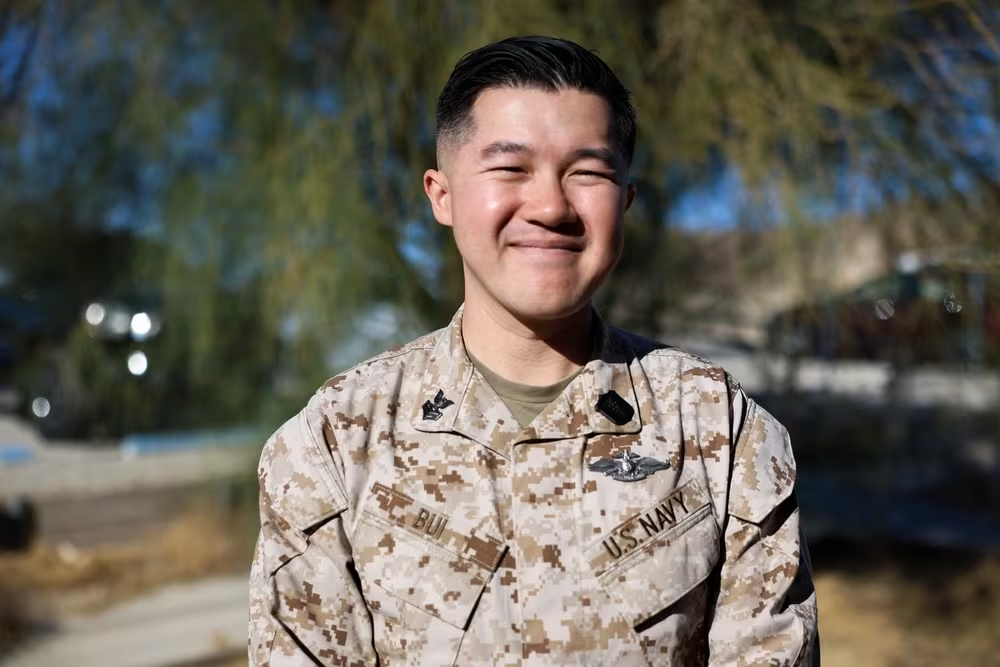Editor’s Note: This article has been updated to clarify that the director of the Army Heat Center plays an advisory role, not an authoritative one, in working with commanders to prevent heat injuries.
When a soldier at a resident command in Fort Benning, Georgia, gets heatstroke — and it’s not clear that proper protocols were followed — the battalion commander or unit leader can expect an email from Lt. Col. Dave DeGroot asking for details.
DeGroot, director of the Army Heat Center at Benning’s Martin Army Community Hospital, has been on a mission since 2019 to raise awareness about prevention of and response to heat injuries. And he’s finding, he says, that compiling data and communicating best practices is enabling leaders to hold their formations accountable and prevent heat injuries from turning debilitating or deadly.
It’s no coincidence that Benning is home to the Army Heat Center. From 2020 to 2024, the base, home to the Army’s Infantry School and Ranger School, saw 1,839 heat injury cases, or 14.8% of all heat injuries recorded among the active-duty force, according to data released in June.
The next location on the list, Camp Lejeune/Cherry Point, North Carolina, had 894 heat injuries — fewer than half that of Benning.
The Heat Center was established following the 2016 death of a 21-year-old officer in Ranger School who’d been treated for hyponatremia, a potentially fatal condition in which overhydration leads to critically low sodium levels.
Overall cases of heatstroke rose precipitously at Benning from 55 in 2017 to 95 and 96 in 2018 and 2019, respectively, before dropping again to around 50. Heat injury, a range of conditions like cramping and fainting due to the body’s inability to cool itself down, also peaked in 2019 with 192 cases. Heat injuries fell to just 26 and 25 cases in 2020 and 2021.
In 2022, DeGroot co-authored a study calling for more on-site medical staff for key training events at Benning, as well as more involvement from leadership. And while newly released data for the entire Defense Department shows a climbing rate of heatstroke cases everywhere — 2024 had a five-year high incidence rate of 36.4 cases of heatstroke per 100,000 person-years, or 471 total cases — that trend hasn’t been seen at Benning, DeGroot said.
“Going back to 2018, which is the year before the Heat Center was formally created, you’ve seen a 70% drop in heatstroke cases,” DeGroot told Military Times in an August interview. “We had, I believe, 90 exertional heatstroke cases in 2018. Last year, we had 20.”
That represented an all-time low since recording began in 2017, he said. There have been 20 cases to date this year, he added, just ahead of the 18 year-to-date in 2024. While those numbers don’t include non-resident commands like the 75th Ranger Regiment, DeGroot said he sees the effect that communication and awareness has had.
“If you have a suspected [heat] casualty, you do two things: you strip them down and apply ice sheets to get them cooled off,” DeGroot said, adding that it was important to treat heat casualties on the spot, rather than transporting a sick soldier to a medical center first.
“When deviations … happen, I will then reach out to the appropriate battalion commander and say, ‘Hey, would you please look into this?’ I’d rather be good than lucky, so we will actively engage with unit leaders on those rare occasions when best practices aren’t followed.”

DeGroot said he reached out to a unit a few weeks previously when he discovered a leader had placed a suspected heat casualty in a government vehicle and driven them to a company training area before applying ice sheets for cooling. After a follow-up conversation, he said, he learned the soldier had fallen out of formation and only started developing symptoms of heat injury in the vehicle.
“That’s a judgment call a drill sergeant made, and in review, it was the right one,” DeGroot said. “We had that dialogue with the unit, got that clarity, and, ‘Oh, OK, no concerns here.’”
But with sweltering summers and training requirements that need to be met, DeGroot said he realizes it’s not always possible to prevent soldiers from exerting themselves in dangerous heat. Thus, he said, Heat Center staff can’t be “overly prescriptive” with training recommendations.
“Basic trainnig and the Ranger Course are drastically different, and the commanders of those respective types of training are going to have different viewpoints on acceptable risk,” he said. “So what we do is provide them with guidance.”
Across DOD, the data released in June shows a steady increase in cases of heat exhaustion, with a significant increase in inpatient heat exhaustion cases in 2023 and 2024. Inpatient heat exhaustion cases jumped from 50 in 2022 to 115 and 78 the next two years.
DeGroot said some of that increase may be driven by better understanding of the condition and intervention that prevents these cases from progressing to something worse.
The data, he added, is hard to parse, as it’s DOD-wide and not correlated to specific units or locations. Fort Benning, he said, has not seen a similar uptick in heat exhaustion.
There’s no direct parallel to the Army Heat Center among the other services. And in addition to invitations to other Army bases, including Fort Knox, Kentucky; Fort Stewart, Georgia; and Fort Irwin, California, DeGroot said he’s received requests from other services to visit and share risk mitigation guidance.
RELATED

He’s presented at a National Guard Medical Conference and made visits to Lackland Air Force Base and Joint Base San Antonio in Texas and Maxwell Air Force Base in Alabama.
Worst-case scenarios do continue to happen, however. In 2023, an Illinois National Guard member died of heat injuries while training at Camp Shelby, Mississippi, and another Guard member was hospitalized with heat injuries.
“We can provide all the recommendations in the world, everything we’ve got in our arsenal that’s based on evidence,” DeGroot said. “But if unit leaders aren’t listening and implementing those, it’s all falling on deaf ears and not having an effect.”





